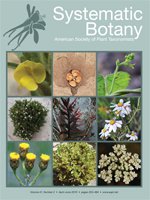The Daucus guttatus complex includes two to four species growing from central and northern Italy to the Middle East. They are characterized by being typically annuals up to 50 cm high; with primary umbels up to 7 cm in diameter with fewer than 25(35) rays; discolored umbels frequent, bearing one to several dark colored umbellules which form different color patterns; and mericarps relatively small, ca. 2.0–4.5 mm. The taxonomy of this complicated group has not been satisfactorily resolved to date and is the focus of current research. Seven names of species belonging to the D. guttatus complex occurring in the central and eastern Mediterranean basin are typified here: Daucus guttatus, Daucus bicolor, Daucus involucratus, Daucus setulosus, Daucus broteri, Daucus hirsutus, and Daucus speciosus. Historical data are reported to justify lectotype and/or epitype selection, and selected morphological and distributional data are used to facilitate identification. The resulting typifications will enable proper naming of clades identified in the accompanying integrated molecular and morphological study, clarifying the taxonomy of the Daucus guttatus complex.
How to translate text using browser tools
28 June 2016
Lectotype Designation for Seven Species Names in the Daucus guttatus Complex (Apiaceae) from the Central and Eastern Mediterranean Basin
Fernando Martínez-Flores,
Carlos I. Arbizu,
Kathleen Reitsma,
Ana Juan,
Philipp W. Simon,
David M. Spooner,
Manuel B. Crespo
ACCESS THE FULL ARTICLE

Systematic Botany
Vol. 41 • No. 2
June 2016
Vol. 41 • No. 2
June 2016
Carrot species
Mediterranean flora
nomenclature
Typification




